Assessment of Heterozygosity in European Local and Cosmopolitan Pig Populations
Abstract
1. Introduction
2. Materials and Methods
2.1. Animal Sampling
2.2. Detection of Heterozygosity-Rich Regions and Gene Annotation
2.3. Between-Breeds Heterozygosity Islands
3. Results
3.1. Detection of Heterozygosity-Rich Regions and Gene Annotation
3.2. Between-Breeds Heterozygosity Islands
4. Discussion
4.1. Detection of Heterozygosity-Rich Regions and Gene Annotation
4.2. Between-Breeds Heterozygosity Islands
5. Conclusions
Supplementary Materials
Author Contributions
Funding
Data Availability Statement
Conflicts of Interest
References
- Megens, H.-J.; Crooijmans, R.P.M.A.; Cristobal, M.S.; Hui, X.; Li, N.; Groenen, M.A. Biodiversity of pig breeds from China and Europe estimated from pooled DNA samples: Differences in microsatellite variation between two areas of domestication. Genet. Sel. Evol. 2008, 40, 103–128. [Google Scholar] [CrossRef] [PubMed]
- Arias, K.D.; Fernández, I.; Gutiérrez, J.P.; Bozzi, R.; Álvarez, I.; Goyache, F. Characterizing local pig breeds as reservoirs for the domestic pig genetic variability worldwide via contributions to gene diversity and allelic richness. J. Anim. Sci. 2024, 102, skae329. [Google Scholar] [CrossRef] [PubMed]
- Buchanan Smith, A.D.; Robison, O.J.; Bryant, D.M. The Genetics of the Pig; Bibliographia Genetica: The Hague, The Netherlands, 2016; Available online: https://www.abebooks.com/Genetics-Pig-Buchanan-Smith-Robison-Bryant/30294075136/bd (accessed on 7 November 2024).
- Yang, S.-L.; Wang, Z.-G.; Liu, B.; Zhang, G.-X.; Zhao, S.-H.; Yu, M.; Fan, B.; Li, M.-H.; Xiong, T.-A.; Li, K. Genetic variation and relationships of eighteen Chinese indigenous pig breeds. Genet. Sel. Evol. 2003, 35, 657–671. [Google Scholar] [CrossRef] [PubMed]
- Yang, B.; Cui, L.; Perez-Enciso, M.; Traspov, A.; Crooijmans, R.P.M.A.; Zinovieva, N.; Schook, L.B.; Archibald, A.; Gatphayak, K.; Knorr, C.; et al. Genome-wide SNP data unveils the globalization of domesticated pigs. Genet. Sel. Evol. 2017, 49, 71. [Google Scholar] [CrossRef]
- Hague, M.T.J.; Routman, E.J. Does population size affect genetic diversity? A test with sympatric lizard species. Heredity 2015, 116, 92–98. [Google Scholar] [CrossRef]
- Larson, G.; Dobney, K.; Albarella, U.; Fang, M.; Matisoo-Smith, E.; Robins, J.; Lowden, S.; Finlayson, H.; Brand, T.; Willerslev, E.; et al. Worldwide Phylogeography of Wild Boar Reveals Multiple Centers of Pig Domestication. Science 2005, 307, 1618–1621. [Google Scholar] [CrossRef]
- Larson, G.; Albarella, U.; Dobney, K.; Rowley-Conwy, P.; Schibler, J.; Tresset, A.; Vigne, J.-D.; Edwards, C.J.; Schlumbaum, A.; Dinu, A.; et al. Ancient DNA, pig domestication, and the spread of the Neolithic into Europe. Proc. Natl. Acad. Sci. USA 2007, 104, 15276–15281. [Google Scholar] [CrossRef]
- Bizarria Dos Santos, W.; Pimenta Schettini, G.; Fonseca, M.G.; Pereira, G.L.; Loyola Chardulo, L.A.; Rodrigues Machado Neto, O.; Baldassini, W.A.; Nunes De Oliveira, H.; Abdallah Curi, R. Fine-scale estimation of inbreeding rates, runs of homozygosity and genome-wide heterozygosity levels in the Mangalarga Marchador horse breed. J. Anim. Breed. Genet. 2020, 138, 161–173. [Google Scholar] [CrossRef]
- Hedrick, P.W. What is the evidence for heterozygote advantage selection? Trends. Ecol. Evol. 2012, 27, 698–704. [Google Scholar] [CrossRef]
- Samuels, D.C.; Wang, J.; Ye, F.; He, J.; Levinson, R.T.; Sheng, Q.; Zhao, S.; A Capra, J.; Shyr, Y.; Zheng, W.; et al. Heterozygosity Ratio, a Robust Global Genomic Measure of Autozygosity and Its Association with Height and Disease Risk. Genetics 2016, 204, 893–904. [Google Scholar] [CrossRef]
- Williams, J.L.; Hall, S.J.G.; Del Corvo, M.; Ballingall, K.T.; Colli, L.; Ajmone Marsan, P.; Biscarini, F. Inbreeding and purging at the genomic Level: The Chillingham cattle reveal extensive, non-random SNP heterozygosity. Anim. Genet. 2015, 47, 19–27. [Google Scholar] [CrossRef] [PubMed]
- Ferenčaković, M.; Banadinović, M.; Mercvajler, M.; Khayat-zadeh, N.; Mészáros, G.; Cubric-Curik, V.; Curik, I.; Sölkner, J. Mapping of heterozygosity rich regions in Austrian Pinzgauer cattle. Acta. Agric. Slov. 2016, 5, 41–44. [Google Scholar] [CrossRef]
- Biscarini, F.; Mastrangelo, S.; Catillo, G.; Senczuk, G.; Ciampolini, R. Insights into Genetic Diversity, Runs of Homozygosity and Heterozygosity-Rich Regions in Maremmana Semi-Feral Cattle Using Pedigree and Genomic Data. Animals 2020, 10, 2285. [Google Scholar] [CrossRef]
- Mulim, H.A.; Brito, L.F.; Batista Pinto, L.F.; Moletta, J.L.; Da Silva, L.R.; Pedrosa, V.B. Genetic and Genomic Characterization of a New Beef Cattle Composite Breed (Purunã) Developed for Production in Pasture-Based Systems. Front. Genet. 2022, 13, 858970. [Google Scholar] [CrossRef]
- Fabbri, M.C.; Tiezzi, F.; Crovetti, A.; Maltecca, C.; Bozzi, R. Investigation of cosmopolitan and local Italian beef cattle breeds uncover common patterns of heterozygosity. Animal 2024, 18, 101142. [Google Scholar] [CrossRef]
- Arias, K.D.; Gutiérrez, J.P.; Fernández, I.; Álvarez, I.; Goyache, F. Approaching autozygosity in a small pedigree of Gochu Asturcelta pigs. Genet. Sel. Evol. 2023, 55, 74. [Google Scholar] [CrossRef]
- Tsartsianidou, V.; Sánchez-Molano, E.; Kapsona, V.V.; Basdagianni, Z.; Chatziplis, D.; Arsenos, G.; Triantafyllidis, A.; Banos, G. A comprehensive genome-wide scan detects genomic regions related to local adaptation and climate resilience in Mediterranean domestic sheep. Genet. Sel. Evol. 2021, 53, 90. [Google Scholar] [CrossRef]
- Chen, Z.; Zhang, Z.; Wang, Z.; Zhang, Z.; Wang, Q.; Pan, Y. Heterozygosity and homozygosity regions affect reproductive success and the loss of reproduction: A case study with litter traits in pigs. Comput. Struct. Biotechnol. J. 2022, 20, 4060–4071. [Google Scholar] [CrossRef]
- Bordonaro, S.; Chessari, G.; Mastrangelo, S.; Senczuk, G.; Chessa, S.; Castiglioni, B.; Tumino, S.; Marletta, D.; Criscione, A. Genome-wide population structure, homozygosity, and heterozygosity patterns of Nero Siciliano pig in the framework of Italian and cosmopolitan breeds. Anim. Genet. 2023, 54, 591–605. [Google Scholar] [CrossRef]
- Liu, S.Q.; Xu, Y.J.; Chen, Z.T.; Li, H.; Zhang, Z.; Wang, Q.S.; Pan, Y.C. Genome-Wide Detection of Runs of Homozygosity and Heterozygosity in Tunchang pigs. Animal 2024, 18, 101236. [Google Scholar] [CrossRef]
- Schiavo, G.; Bovo, S.; Muñoz, M.; Ribani, A.; Alves, E.; Araújo, J.P.; Bozzi, R.; Čandek-Potokar, M.; Charneca, R.; Fernandez, A.I.; et al. Runs of homozygosity provide a genome landscape picture of inbreeding and genetic history of European autochthonous and commercial pig breeds. Anim. Genet. 2021, 52, 155–170. [Google Scholar] [CrossRef] [PubMed]
- Zorc, M.; Škorput, D.; Gvozdanović, K.; Margeta, P.; Karolyi, D.; Luković, Z.; Salajpal, K.; Savić, R.; Muñoz, M.; Bovo, S.; et al. Genetic diversity and population structure of six autochthonous pig breeds from Croatia, Serbia, and Slovenia. Genet. Sel. Evol. 2022, 54, 30. [Google Scholar] [CrossRef] [PubMed]
- Poklukar, K.; Mestre, C.; Škrlep, M.; Čandek-Potokar, M.; Ovilo, C.; Fontanesi, L.; Riquet, J.; Bovo, S.; Schiavo, G.; Ribani, A.; et al. A meta-analysis of genetic and phenotypic diversity of European local pig breeds reveals genomic regions associated with breed differentiation for production traits. Genet. Sel. Evol. 2023, 55, 88. [Google Scholar] [CrossRef] [PubMed]
- Dadousis, C.; Muñoz, M.; Óvilo, C.; Fabbri, M.C.; Araújo, J.P.; Bovo, S.; Potokar, M.Č.; Charneca, R.; Crovetti, A.; Gallo, M.; et al. Admixture and breed traceability in European indigenous pig breeds and wild boar using genome-wide SNP data. Sci. Rep. 2022, 12, 7346. [Google Scholar] [CrossRef]
- Muñoz, M.; Bozzi, R.; García, F.; Núñez, Y.; Geraci, C.; Crovetti, A.; García-Casco, J.; Alves, E.; Škrlep, M.; Charneca, R.; et al. Diversity across major and candidate genes in European local pig breeds. PLOS ONE 2018, 13, e0207475. [Google Scholar] [CrossRef]
- Biscarini, F.; Cozzi, P.; Gaspa, G.; Marras, G. detectRUNS: Detect Runs of Homozygosity and Runs of Heterozygosity in Diploid Genomes; CRAN: Vienna, Austria, 2019. [Google Scholar]
- Durinck, S.; Spellman, P.T.; Birney, E.; Huber, W. Mapping identifiers for the integration of genomic datasets with the R/Bioconductor package biomaRt. Nat. Protoc. 2009, 4, 1184–1191. [Google Scholar] [CrossRef]
- Szklarczyk, D.; Franceschini, A.; Wyder, S.; Forslund, K.; Heller, D.; Huerta-Cepas, J.; Simonovic, M.; Roth, A.; Santos, A.; Tsafou, K.P.; et al. STRING v10: Protein–protein interaction networks, integrated over the tree of life. Nucleic Acids Res. 2015, 43, D447–D452. [Google Scholar] [CrossRef]
- Chang, C.C.; Chow, C.C.; Tellier, L.C.; Vattikuti, S.; Purcell, S.M.; Lee, J.J. Second-generation PLINK: Rising to the challenge of larger and richer datasets. GigaScience 2015, 4, 7. [Google Scholar] [CrossRef]
- Ruan, D.; Yang, J.; Zhuang, Z.; Ding, R.; Huang, J.; Quan, J.; Gu, T.; Hong, L.; Zheng, E.; Li, Z.; et al. Assessment of Heterozygosity and Genome-Wide Analysis of Heterozygosity Regions in Two Duroc Pig Populations. Front. Genet. 2022, 12, 812456. [Google Scholar] [CrossRef]
- Hua, F.; Nass, T.; Parvatiyar, K. TRIM28 facilitates type I interferon activation by targeting TBK1. Front. Immunol. 2024, 15, 1279920. [Google Scholar] [CrossRef]
- Kamaliyan, Z.; Clarke, T.L. Zinc finger proteins: Guardians of genome stability. Front. Cell Dev. Biol. 2024, 12, 1448789. [Google Scholar] [CrossRef]
- Li, C.; Wang, Y.; Zheng, H.; Dong, W.; Lv, H.; Lin, J.; Guo, K.; Zhang, Y. Antiviral activity of ISG15 against classical swine fever virus replication in porcine alveolar macrophages via inhibition of autophagy by ISGylating BECN1. Vet. Res. 2020, 51, 22. [Google Scholar] [CrossRef] [PubMed]
- Mallikarjunappa, S.; Sargolzaei, M.; Brito, L.F.; Meade, K.G.; Karrow, N.A.; Pant, S.D. Short communication: Uncovering quantitative trait loci associated with resistance to Mycobacterium avium ssp. paratuberculosis infection in Holstein cattle using a high-density single nucleotide polymorphism panel. J. Dairy Sci. 2018, 101, 7280–7286. [Google Scholar] [CrossRef] [PubMed]
- Freitas, F.B.; Frouco, G.; Martins, C.; Ferreira, F. African swine fever virus encodes for an E2-ubiquitin conjugating enzyme that is mono- and di-ubiquitinated and required for viral replication cycle. Sci. Rep. 2018, 8, 3471. [Google Scholar] [CrossRef]
- Chessari, G.; Criscione, A.; Marletta, D.; Crepaldi, P.; Portolano, B.; Manunza, A.; Cesarani, A.; Biscarini, F.; Mastrangelo, S. Characterization of heterozygosity-rich regions in Italian and worldwide goat breeds. Sci. Rep. 2024, 14, 3. [Google Scholar] [CrossRef]
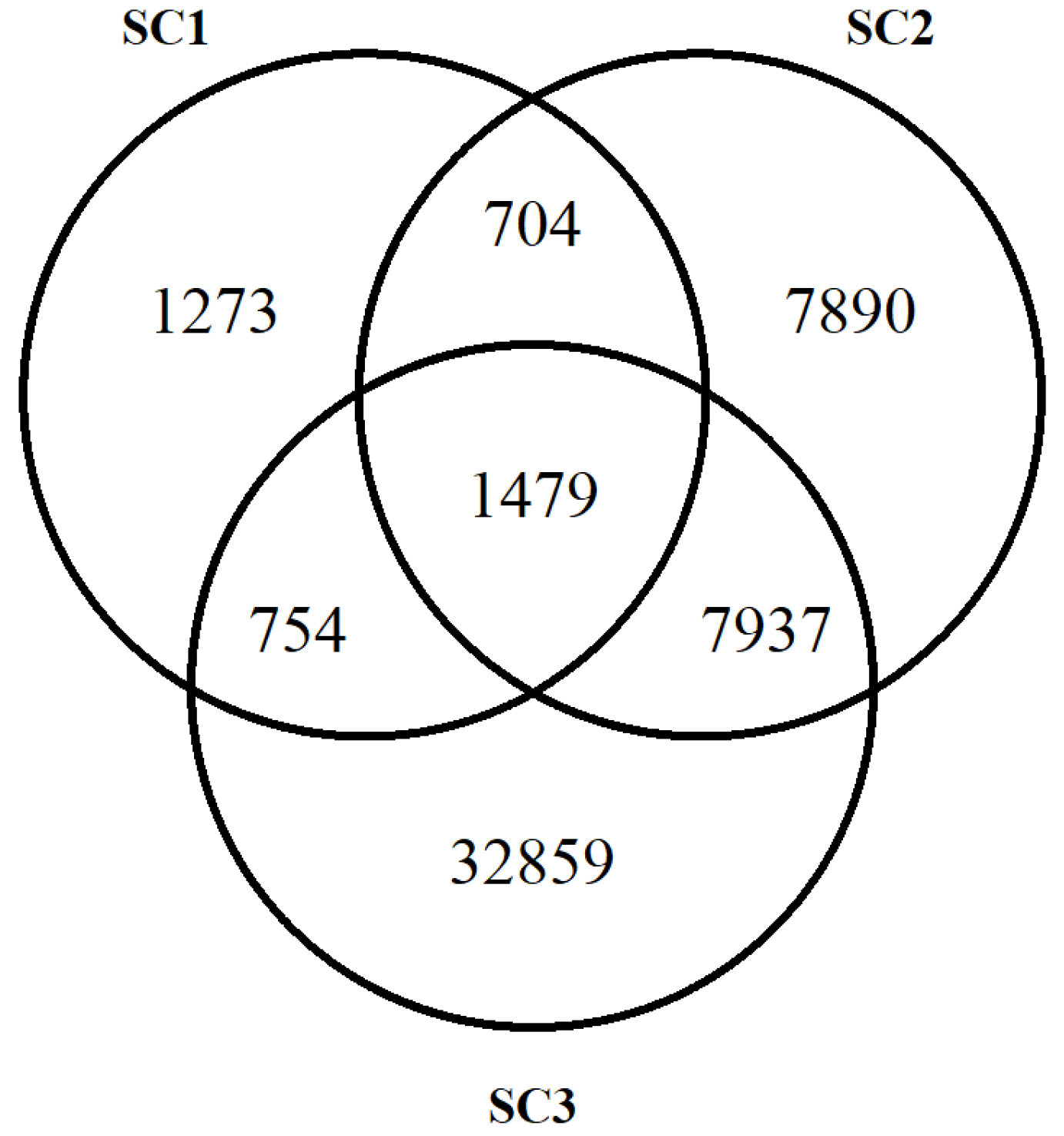
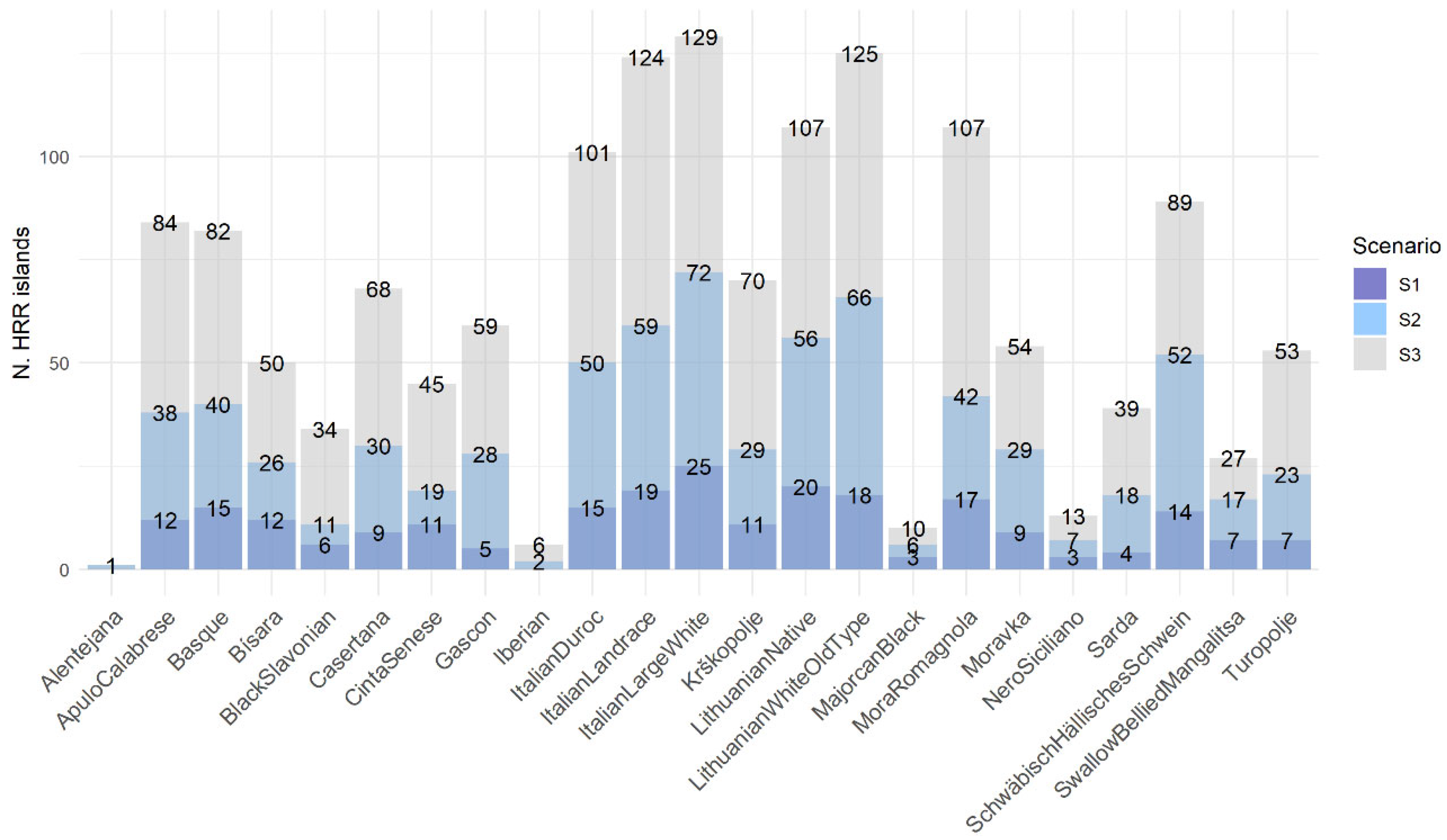
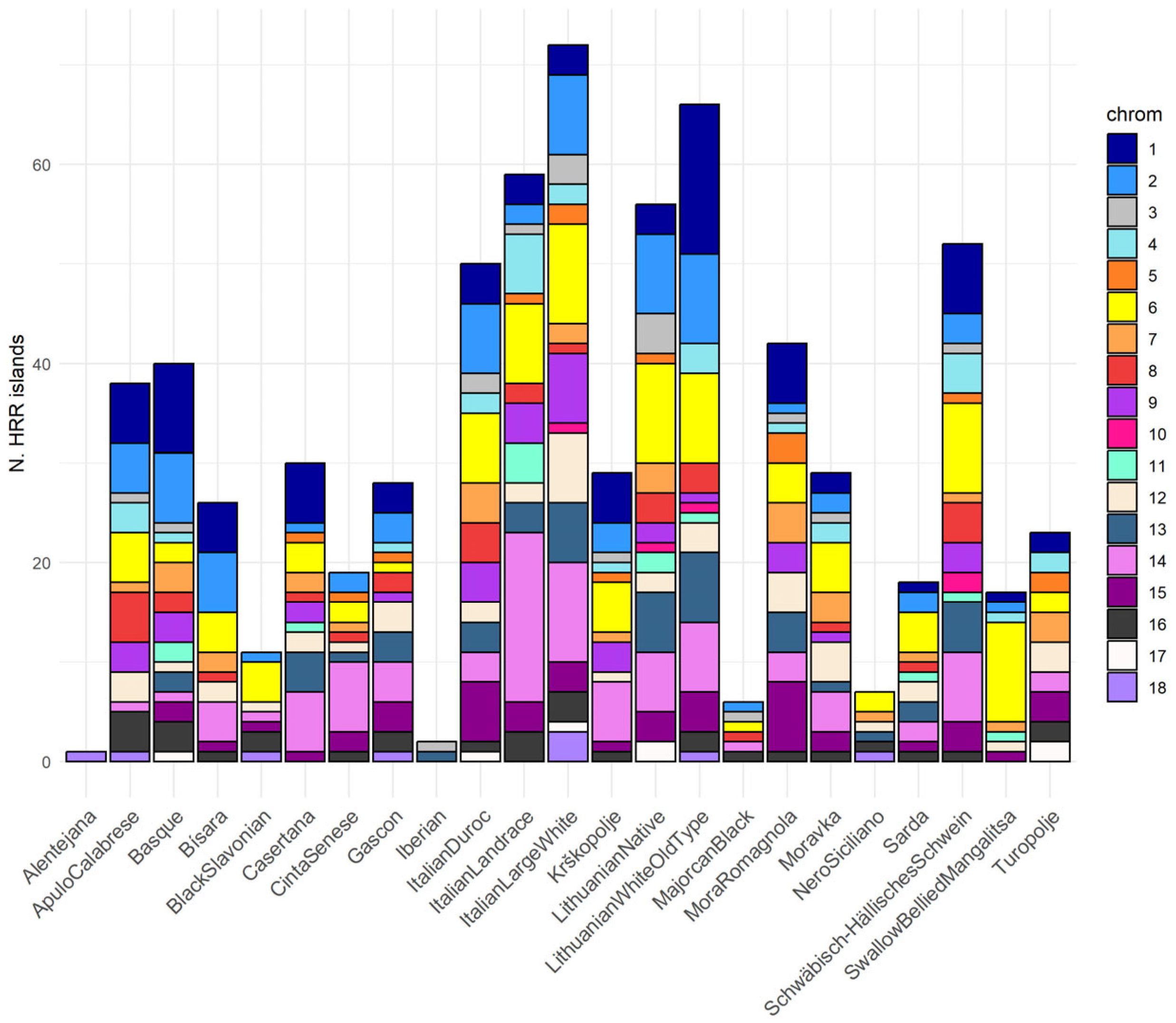
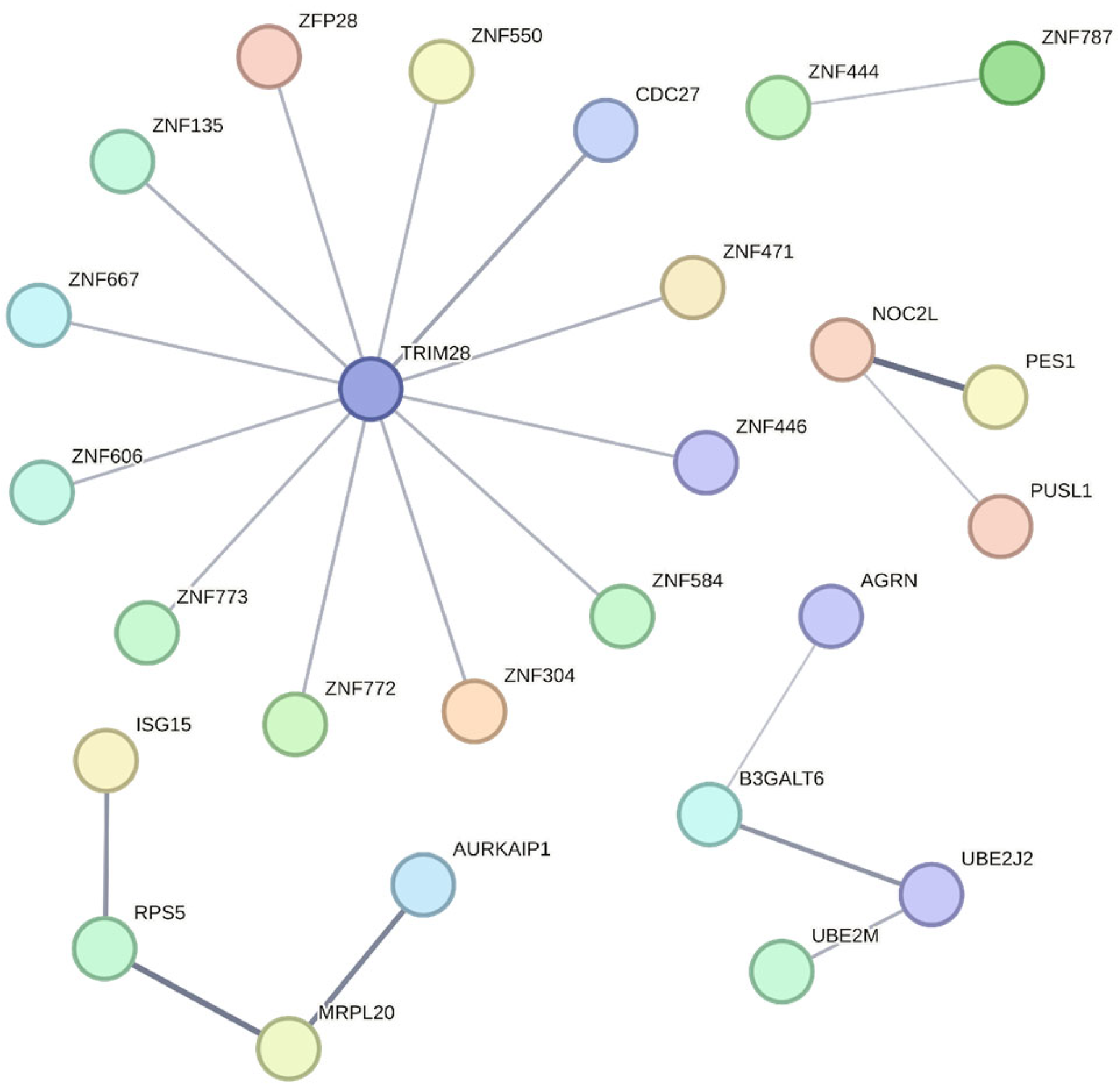
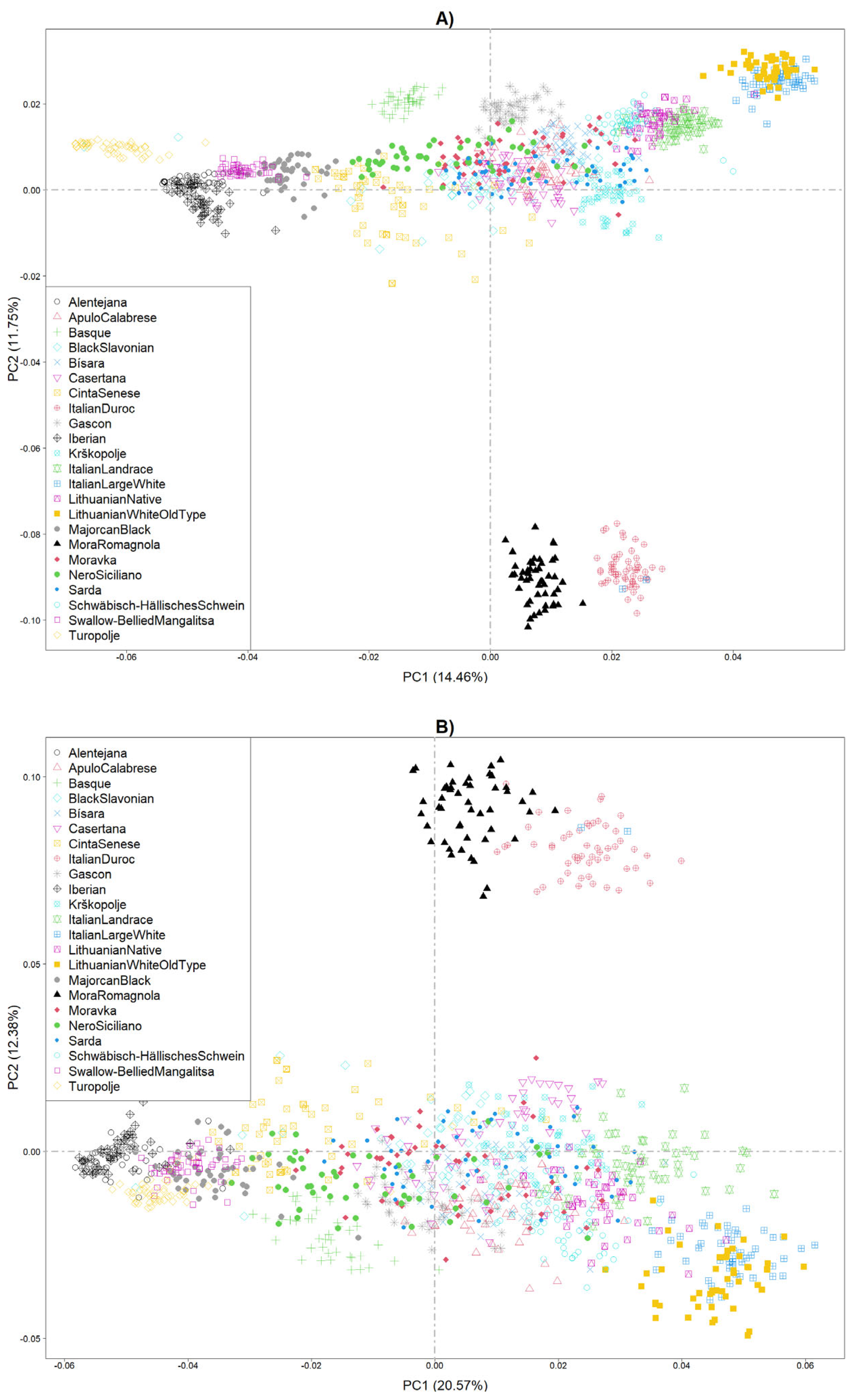
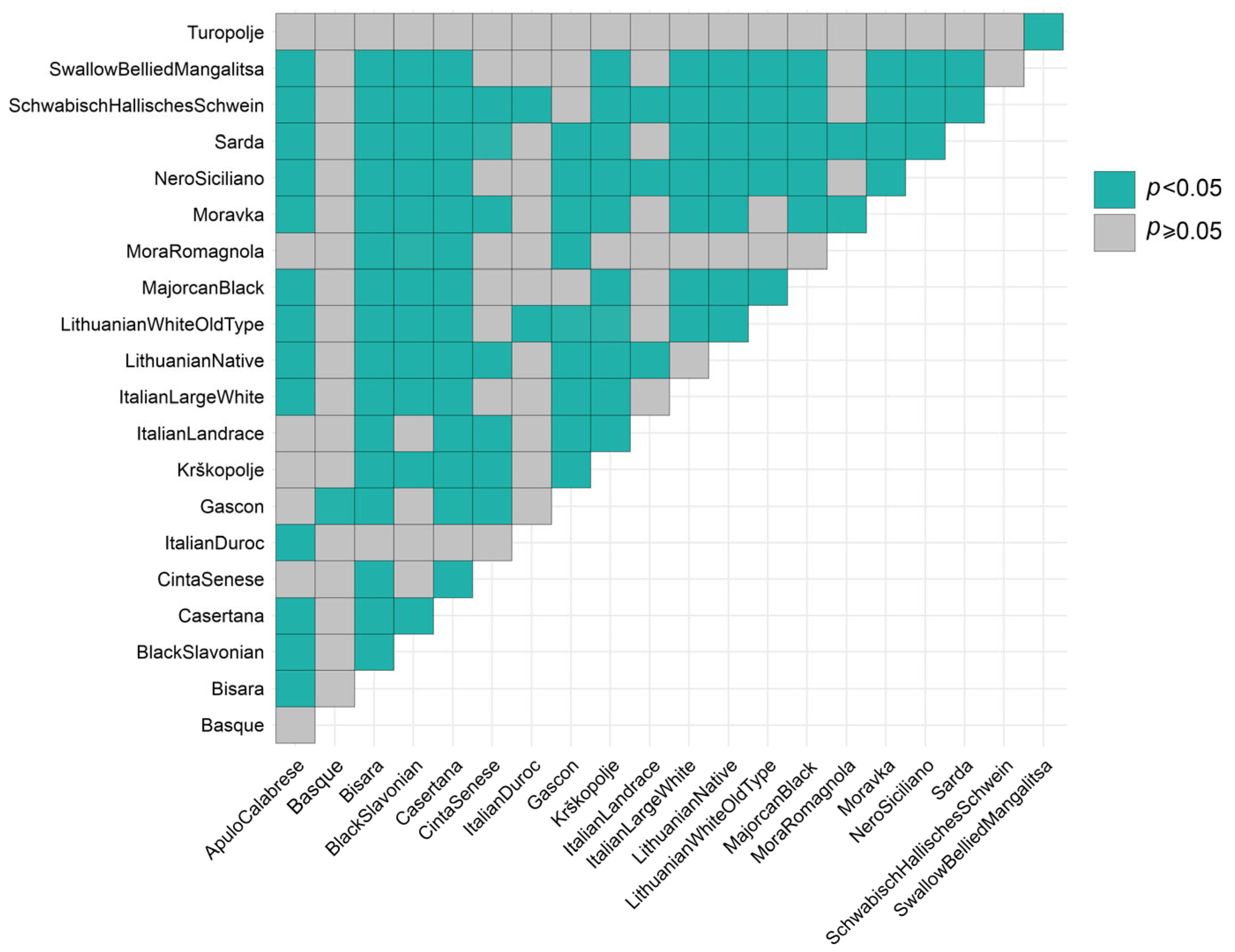
| Breed | Country | N. |
|---|---|---|
| Alentejana | Portugal | 48 |
| Apulo Calabrese | Italy | 53 |
| Basque | France | 39 |
| Black Slavonian | Croatia | 49 |
| Bísara | Portugal | 49 |
| Casertana | Italy | 55 |
| Cinta Senese | Italy | 54 |
| Italian Duroc | Italy | 53 |
| Gascon | France | 48 |
| Iberian | Spain | 48 |
| Krškopolje | Slovenia | 52 |
| Italian Landrace | Italy | 52 |
| Italian Large White | Italy | 52 |
| Lithuanian Native | Lithuania | 48 |
| Lithuanian White Old Type | Lithuania | 48 |
| Majorcan Black | Spain | 48 |
| Mora Romagnola | Italy | 48 |
| Moravka | Serbia | 50 |
| Nero Siciliano | Italy | 50 |
| Sarda | Italy | 49 |
| Schwabisch-Hällisches Schwein | Germany | 51 |
| Swallow-Bellied Mangalitsa | Serbia | 50 |
| Turopolje | Croatia | 50 |
| Breed | N. Genes Within HRRs | Sum of Genes in HRRs | % of Genes in HRRs |
|---|---|---|---|
| Italian Large White | 916 | 2321 | 39.47 |
| Lithuanian White Old Type | 737 | 2321 | 31.75 |
| Schwäbisch Hällisches Schwein | 564 | 2321 | 24.30 |
| Italian Duroc | 456 | 2321 | 19.65 |
| Lithuanian Native | 409 | 2321 | 17.62 |
| Apulo Calabrese | 407 | 2321 | 17.54 |
| Krškopolje | 340 | 2321 | 14.65 |
| Italian Landrace | 325 | 2321 | 14.00 |
| Moravka | 280 | 2321 | 12.06 |
| Bìsara | 212 | 2321 | 9.13 |
| Casertana | 203 | 2321 | 8.75 |
| Mora Romagnola | 200 | 2321 | 8.62 |
| Swallow-Bellied Mangalitsa | 175 | 2321 | 7.54 |
| Sarda | 166 | 2321 | 7.15 |
| Basque | 141 | 2321 | 6.07 |
| Cinta Senese | 139 | 2321 | 5.99 |
| Majorcan Black | 133 | 2321 | 5.73 |
| Turopolje | 124 | 2321 | 5.34 |
| Gascon | 119 | 2321 | 5.13 |
| Black Slavonian | 109 | 2321 | 4.70 |
| Nero Siciliano | 70 | 2321 | 3.02 |
Disclaimer/Publisher’s Note: The statements, opinions and data contained in all publications are solely those of the individual author(s) and contributor(s) and not of MDPI and/or the editor(s). MDPI and/or the editor(s) disclaim responsibility for any injury to people or property resulting from any ideas, methods, instructions or products referred to in the content. |
© 2025 by the authors. Licensee MDPI, Basel, Switzerland. This article is an open access article distributed under the terms and conditions of the Creative Commons Attribution (CC BY) license (https://creativecommons.org/licenses/by/4.0/).
Share and Cite
Fabbri, M.C.; Arias, K.D.; Rezende, M.P.G.; Tiezzi, F.; Biffani, S.; Goyache, F.; Schiavo, G.; Bovo, S.; Fontanesi, L.; Čandek-Potokar, M.; et al. Assessment of Heterozygosity in European Local and Cosmopolitan Pig Populations. Agriculture 2025, 15, 761. https://doi.org/10.3390/agriculture15070761
Fabbri MC, Arias KD, Rezende MPG, Tiezzi F, Biffani S, Goyache F, Schiavo G, Bovo S, Fontanesi L, Čandek-Potokar M, et al. Assessment of Heterozygosity in European Local and Cosmopolitan Pig Populations. Agriculture. 2025; 15(7):761. https://doi.org/10.3390/agriculture15070761
Chicago/Turabian StyleFabbri, Maria Chiara, Katherine D. Arias, Marcos P. G. Rezende, Francesco Tiezzi, Stefano Biffani, Felix Goyache, Giuseppina Schiavo, Samuele Bovo, Luca Fontanesi, Marjeta Čandek-Potokar, and et al. 2025. "Assessment of Heterozygosity in European Local and Cosmopolitan Pig Populations" Agriculture 15, no. 7: 761. https://doi.org/10.3390/agriculture15070761
APA StyleFabbri, M. C., Arias, K. D., Rezende, M. P. G., Tiezzi, F., Biffani, S., Goyache, F., Schiavo, G., Bovo, S., Fontanesi, L., Čandek-Potokar, M., Muñoz, M., Ovilo, C., Poklukar, K., Škrlep, M., & Bozzi, R. (2025). Assessment of Heterozygosity in European Local and Cosmopolitan Pig Populations. Agriculture, 15(7), 761. https://doi.org/10.3390/agriculture15070761










